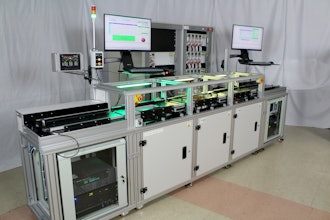
Ever opened a carton of eggs at the grocery store and checked for cracks or defects? Most of us do, ensuring the eggs are not cracked and meet our quality expectations.
But you do not inspect every single egg individually. So, at what point do you decide whether the whole carton is good to purchase?
That’s Six Sigma in action: A structured approach to process improvement that leverages data and statistical analysis to minimize defects and reduce variability in operations, such as picking a carton where all the eggs look intact.
What is Six Sigma?
Six Sigma is a data-driven methodology that originated at Motorola in the mid-1980s and gained widespread traction thanks to GE in the 1990s. Rooted in statistics, it focuses on reducing defects and improving quality.
By convention, Six Sigma is defined as 3.4 defects per one million opportunities (DPMO) after accounting for a 1.5 sigma mean shift – that’s a 99.99966% yield. That is like running a million brake pads and only three fail. Most of us would take those odds.
Think of Six Sigma as tightening the range until defects are nearly impossible. At lower Sigma levels, variation is wide, so the process strays from the target, and errors are common. As you move up the Sigma scale, that variation shrinks. By the time you reach Six Sigma, the process is so tightly controlled that defects only happen at the extreme edges.
This means manufacturers can rely on sample testing, pushing a few parts to breaking points with, say, heat, vibration or stress, rather than relying on exhaustive inspection. This approach saves time, reduces waste and ensures consistency from the start.
Designing for Quality, Not Just Inspecting It
We see Six Sigma most often in the automotive industry and for good reason. Early in my career, I worked in manufacturing as a computer software professional. In the late 1980s, I attended a conference where a major automaker presented how they were designing parts to fail less than once in one million.
They produced millions of brake pads, and inspecting each one individually wasn’t realistic. To do so would be tedious, time-consuming and, frankly, unnecessary if the product is designed consistently.
So, they shifted from reactive inspection to proactive design. Instead of relying on an exhaustive examination, they began to create their processes to ensure quality from the start. They began by measuring the thickness of a sample batch of brake pads, then applied statistical analysis to verify consistency across different production runs.
The fewer defects they had, the closer they began to move across that scale to achieve the highest levels of consistency. It was revolutionary.
Six Sigma Isn’t Always The Goal
Six Sigma’s principles apply across virtually every manufacturing sector. But pursuing Six Sigma in low-risk or low-cost industries can be overkill as the cost to achieve it may outweigh the benefit.
Take plastic injection molding: Once the process is dialed in with steady temperatures, good materials and reliable molds, you can crank out identical parts all day. But if you make 100 parts and five come back bad, that’s 5% scrap. That level of performance is roughly Two Sigma. While far from Six Sigma, it might still meet business goals depending on cost, safety and industry requirements.
Before DMAIC, Start with Data
Whether you're running a machine shop or managing a molding operation, the goal remains the same: Achieve consistent quality through controlled processes. So how do you begin working toward any Sigma level?
Six Sigma follows the DMAIC strategy:
- Define the problem
- Measure performance
- Analyze root causes
- Improve processes
- Control outcomes
But before you even start DMAIC, there’s an extra “D” to consider – Data.
Start by scrutinizing the data you have. Software solutions play a vital role in helping make manufacturers’ data accessible and actionable.
Use your ERP or MES to gather reliable production metrics and validate that your data reflects what is actually happening on the floor. Your team can utilize tools like dashboards, advanced quality modules and statistical analysis features to monitor performance and drive continuous improvement.
Clean data leads to smart output, while bad data causes chaos. Without clean data, your definition, measurement and analysis may be flawed, and your results unreliable.
Smart Tools Need Smart Input
Accurate data is the foundation of any successful Six Sigma initiative. It’s also what’s powering the next manufacturing revolution: Artificial Intelligence (AI).
Together, Six Sigma and AI represent a powerful combination that complement one another, each improving processes by reducing variability and finding patterns to make highly accurate predictions. With AI enhancing data insights and Six Sigma ensuring process control, manufacturers are better equipped than ever to deliver consistent, high-quality products.
Your Strongest Quality Tool? Your Team.
Still, no matter how advanced the tools become, one principle remains unchanged: It all starts with your people.
I will often ask customers, “How many people are on your quality control team?” They might say three or four. Then I will ask, “How many people work on your floor?” To which they might say 150. And that’s the real answer.
While you absolutely need that quality control manager to lead, every single person has a responsibility to maintain and analyze the quality of the products you are producing.
Six Sigma isn’t just a methodology; it’s a mindset that leadership must champion. When everyone owns quality, Six Sigma becomes part of the culture, not just a project.
So, my advice? Build quality into the process, back it with good data, and make it everyone’s job. Do that, and you won’t need to check every egg in the carton.
 Tim ShoemakerEpicor
Tim ShoemakerEpicor






















